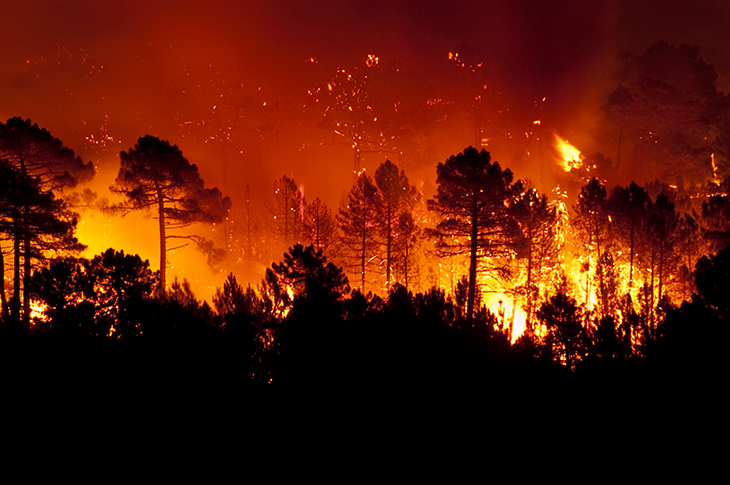Staying Safe from Wildfires
Wildfires are common disasters that can spread quickly, particularly during dry conditions. Learning about wildfire risks and planning in advance can help protect against the destructive impacts of wildfires. OSHA and National Oceanic and Atmospheric Administration (NOAA) are working together to provide resources to keep workers, employers, and homeowners stay safe and prepare for wildfires and their impact.
Having an evacuation plan in place before a wildfire occurs can help avoid confusion and prevent injuries. A thorough evacuation plan should include:
- Conditions that will activate the plan
- Chain of command
- Emergency functions and who will perform them
- Specific evacuation procedures, including routes and exits
- Procedures for accounting for family members, personnel, customers, and/or visitors
- Equipment for family or personnel
- Review the plan with family members or team
In case you have to mobilize quickly, it’s important to have a basic disaster supply kit ready to go. To assemble your kit store items in airtight plastic bags and put your entire disaster supplies kit in one or two easy-to-carry containers such as plastic bins or a duffel bag. A basic emergency supply kit could include the following recommended items:
- Water (one gallon per person per day for several days, for drinking and sanitation)
- Food (at least a several-day supply of non-perishable food)
- Battery-powered or hand crank radio and a NOAA Weather Radio with tone alert
- Flashlight
- First aid kit
- Extra batteries
- Whistle (to signal for help)
- Dust mask (to help filter contaminated air)
- Plastic sheeting and duct tape (to shelter in place)
- Moist towelettes, garbage bags and plastic ties (for personal sanitation)
- Wrench or pliers (to turn off utilities)
- Manual can opener (for food)
- Local maps
- Cell phone with chargers and a backup battery
- Medications
- Baby formula
- Critical documents
- Spare eyeglasses
- Pet supplies
For more information on building an emergency supply kit, go to: https://www.ready.gov/kit
Here are tips from Ready.gov about what to do during a wildfire:
- Pay attention to emergency alerts and notifications for information and instructions
- Evacuate immediately if authorities tell you to do so
- Check with local authorities for the latest information about public shelters or check open locations on the FEMA app. You can also download the free Red Cross Emergency app for a list of open Red Cross shelters in your area
- Consider making plans with friends or family to shelter with them where you may be safer and more comfortable
- If trapped, call 9-1-1 and give your location, but be aware that emergency response could be delayed or impossible. Turn on lights to help rescuers find you
- Use an N95 mask to protect yourself from smoke inhalation or limit your exposure to smoke by doing the following:
- Choose a room to close off from outside air and set up a portable air cleaner or filter to keep the air in this room clean even when it’s smoky in the rest of the building and outdoors
- Use high efficiency filters in your central air conditioning system to capture fine particles from smoke. If your system has fresh air intake, set the system to “recirculate” mode and close the outdoor intake damper
- If you are not ordered to evacuate but smoky conditions exist, stay inside in a safe location or go to a community building where smoke levels are lower - If you are sick and need medical attention, contact your healthcare provider for further care instructions and shelter in place, if possible
For more resources on staying safe during wildfires, visit https://www.osha.gov/wildfires/response and https://www.ready.gov/wildfires
Credit: OSHA and Ready.gov
Learn more about HazTek Safety & OSHA Training.
